Zoals de titel al vermeldt, komen we op vrijdag weer samen na een tijdje van maandagen. Tot vrijdag!
Just How Is Voyager 2 Going To Sort Out Its Dish Then?
Anybody who has set up a satellite TV antenna will tell you that alignment is critical when picking up a signal from space. With a satellite dish it’s a straightforward task to tweak the position, but what happens if the dish in question is out beyond the edge of the Solar System?
We told you a few days ago about this exact issue currently facing Voyager 2, but we’re guessing Hackaday readers will want to know a little bit more about how a 50+ year old spacecraft so far from home can still sort out its antenna. The answer lies in NASA Technical Report 32-1559, Digital Canopus Tracker from 1972, which describes the instrument that notes the position of the star Canopus, which along with that of the Sun it can use to calculate the antenna bearing to reach Earth. The report makes for fascinating reading, as it describes how early-1970s technology was used to spot the star by its specific intensity and then keep it in its sights. It’s an extremely accessible design, as even the part numbers are an older version of the familiar 74 logic.
So somewhere out there in interstellar space beyond the boundary of the Solar System is a card frame full of 74 logic that’s been quietly keeping an eye on a star since the early 1970s, and the engineers from those far-off days at JPL are about to save the bacon of the current generation at NASA with their work. We hope that there are some old guys in Pasadena right now with a spring in their step.
A Vintage Transistor Radio Gets A Repair
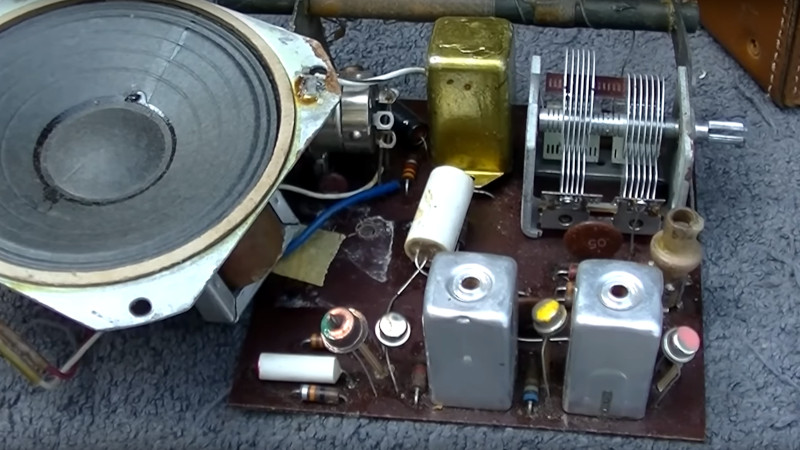
Here in 2023 the field of electronics covers a breathtaking variety of devices and applications, but if we were to go back in time far enough we’d enter an age in which computers were few and far between, and any automated control systems would have been electromechanical at best. Back in the 1950s the semiconductor industry was in relative infancy, and at the consumer end electronics were largely synonymous with radio. [Shango066] brings us a transistor radio from that era, a Jewel TR1 from about 1958, that despite its four-transistor simplicity to our eyes would have been a rare and expensive device when new.
As you’d expect, a transistor radio heading toward its 70th birthday requires a little care to return to its former glory, and while this one is very quiet it does at least work after a fashion. The video below the break is a long one that you might wish to watch at double speed, but it takes us through the now-rare skill of fault-finding and aligning an AM radio receiver. First up are a set of very tired electrolytic capacitors whose replacement restores the volume, and then it’s clear from the lack of stations that the set has a problem at the RF end. We’re treated to the full process of aligning a superhet receiver through the relatively forgiving low-frequency medium of a medium-wave radio. Along the way, he damages one of the IF transformers and has to replace it with a modern equivalent, which we would have concealed under the can from the original.
The video may be long, but it’s worth a look for the vintage parts if not for the quality of radio stations on the air today in California. For many readers, AM broadcast is becoming a thing of the past, so we’re not sure we’ll see this very often.
Minimal Mods Make Commodity LNBs Work For QO-100 Reception
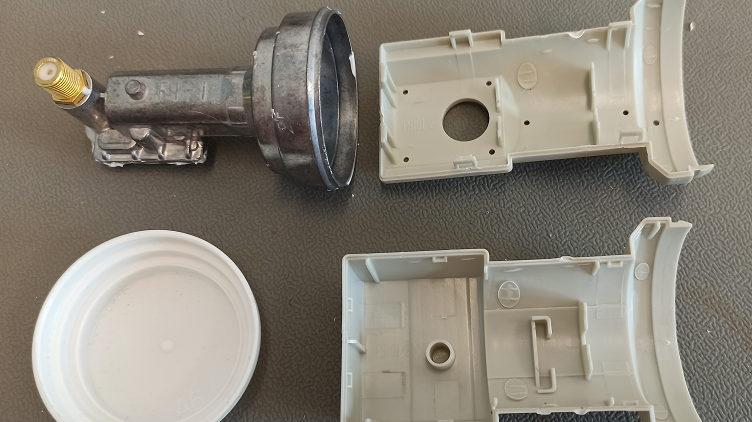
A word of advice: If you see an old direct satellite TV dish put out to the curb, grab it before the trash collector does. Like microwave ovens, satellite dishes are an e-waste wonderland, and just throwing them away before taking out the good stuff would be a shame. And with dishes, the good stuff basically amounts to the bit at the end of the arm that contains the feedhorn and low-noise block downconverter (LNB).
But what does one do with such a thing once it’s harvested? Lots of stuff, including modifying it for use with the QO-100 geosynchronous satellite. That’s what [Sebastian Westerhold] and [Celin Matlinski] did with a commodity LNB, although it seems more like something scored on the cheap from one of the usual sources rather than picking through trash. Either way, these LNBs are highly integrated devices that at built specifically for satellite TV use, but with just a little persuasion can be nudged into the K-band to receive the downlink signals from hams using QO-100 as a repeater.
The mods are simple — snipping out the 25 MHz reference crystal on the LNB board and replacing it with a simple LC bandpass filter. This allows the local oscillator on the LNB to be referenced to an external signal generator; when fed with a 25.78 MHz signal, it’s enough to goose the LNB up to 10,490 MHz — right about the downlink frequency. [Sebastian] and [Celin] tested the mods and found that it was easily able to detect the third harmonics of a 3.5-ish GHz signal.
As for testing on actual downlink signals from the satellite, that’ll have to wait. For now, if you’re interested in satellite comms, and you live on the third of the planet covered by QO-100, keep an eye out for those e-waste LNBs and get to work.
Cheap Ham Radio Improves The Low End UI If Not The RF

There was a time when buying a new radio was something many hams could never afford to do. Then came the super cheap — and super controversial — VHF and UHF radios from China. But as they say, you get what you pay for. The often oddly named handhelds like Baofeng and Wouxun are sometimes odd to work with and may have questionable RF outputs. A new radio has a less tongue-twisting English name and many improved features for about $50 — the Talkpod A36Plus and [Josh] shows us how they work in a video that you can see below.
The new features are generally good. For example, the radio can pick up AM in the aircraft band, something most of these cheap radios won’t do. It works on VHF and UHF bands but also picks up FM broadcasts. The USB-C connector is welcome, and the screen is large and colorful. It has 500 channels and IP5 water resistance.
There were a few issues, though. If you want to use it as a scanner, it’s not very fast. The radio comes with a programming cable, but apparently, it uses an odd USB chipset that may give you some driver issues. The biggest problem, though, is that it has, according to the video, excessive spurious emissions. The power isn’t that high, and the antenna probably filters off some of it, too. But creating interference across the band isn’t very polite.
How bad are the harmonics? Well, [Josh] hooks up a spectrum analyzer and also shows how a radio tuned to the second harmonic easily picks up the transmission. Of course, no radio is perfect, but it seems like it does have very strong harmonic emissions. Of course, it may or may not be any worse than similar cheap radios. They are probably all above the legal limits, and it is just a matter of degrees.
These little radios won’t directly work the world — you need an HF radio for that, generally. They will let you connect to local repeaters, though. Some of those cheap radios can lead to interesting projects, too.
Easy Modifications For Inexpensive Radios
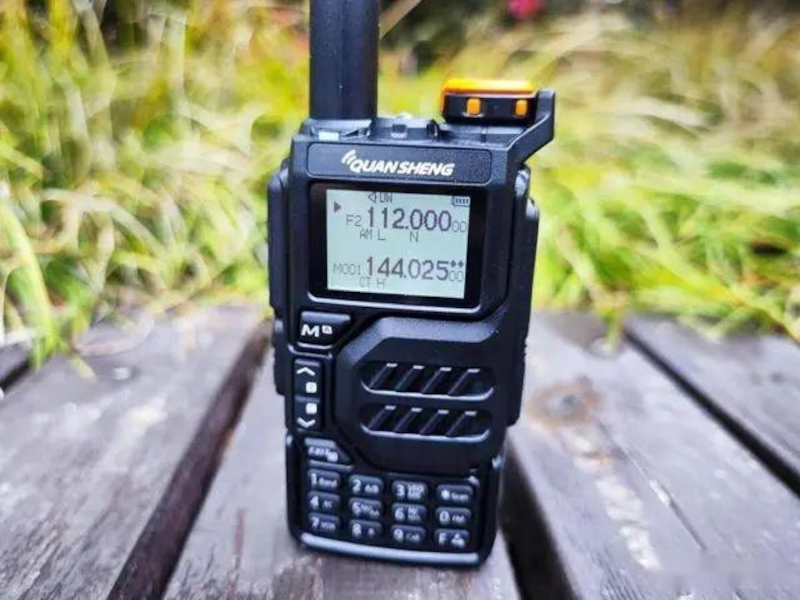
Over the past decade or so, amateur radio operators have benefited from an influx of inexpensive radios based around a much simpler design than what was typically commercially available, bringing the price of handheld dual-band or GMRS radios to around $20. This makes the hobby much more accessible, but they have generated some controversy as they tend to not perform as well and can generate spurious emissions and other RF interference that a higher quality radio might not create. But one major benefit besides cost is that they’re great for tinkering around, as their simplified design is excellent for modifying. This experimental firmware upgrade changes a lot about this Quansheng model.
With the obligatory warning out of the way that modifying a radio may violate various laws or regulations of some localities, it looks like this modified firmware really expands the capabilities of the radio. The chip that is the basis of the radio, the BK4819, has a frequency range of 18-660 MHz and 840-1300 MHz but not all of these frequencies will be allowed with a standard firmware in order to comply with various regulations. However, there’s typically no technical reason that a radio can’t operate on any arbitrary frequency within this range, so opening up the firmware can add a lot of functionality to a radio that might not otherwise be capable.
Some of the other capabilities this modified firmware opens up is the ability to receive in various other modes, such as FM and AM within the range of allowable frequencies. To take a more deep dive on what this firmware allows be sure to check out the original GitHub project page as well, and if you’re curious as to why these inexpensive radios often run afoul of radio purists and regulators alike, take a look at some of the problems others have had in Europe.
The Voice Of GPS

Tuning into a GPS satellite is nothing new. Your phone and your car probably do that multiple times a day. But [dereksgc] has been listening to GPS voice traffic. The traffic originates from COSPAS-SARSAT, which is a decades-old international cooperative of 45 nations and agencies that operates a worldwide search and rescue program. You can watch a video about it below.
Nominally, a person in trouble activates a 406 MHz beacon, and any of the 66 satellites that host COSPAS-SARSAT receivers can pick it up and relay information to the appropriate authorities. These beacons are often attached to aircraft or ships, but there are an increasing number of personal beacons used by campers, hikers, and others who might be in danger and out of reach of a cell phone. The first rescue from this system was in 1982. By 2021, 3,632 people were rescued thanks to the system.
The satellites that listen to the beacon frequencies don’t process the signals. They use a transponder that re-transmits anything it hears on a much higher downlink frequency. These transponders are always payloads on other satellites like navigation or weather satellites. But because the transponder doesn’t care what it hears, it sometimes rebroadcasts signals from things other than beacons. We were unclear if these were rogue radios or radios with spurious emissions in the translator’s input range.
The video has practical tips on how to tune in several of the satellites that carry these transponders. Might be a fun weekend project with a software-defined radio.
We’ve seen homebrew satellite devices, but none for an emergency beacon — we aren’t sure what the legal aspects of that would be. There are other satellites that unknowingly host pirate radio stations, too.
Connect and communicate with a satellite via the LEDSAT Digipeater Challenge
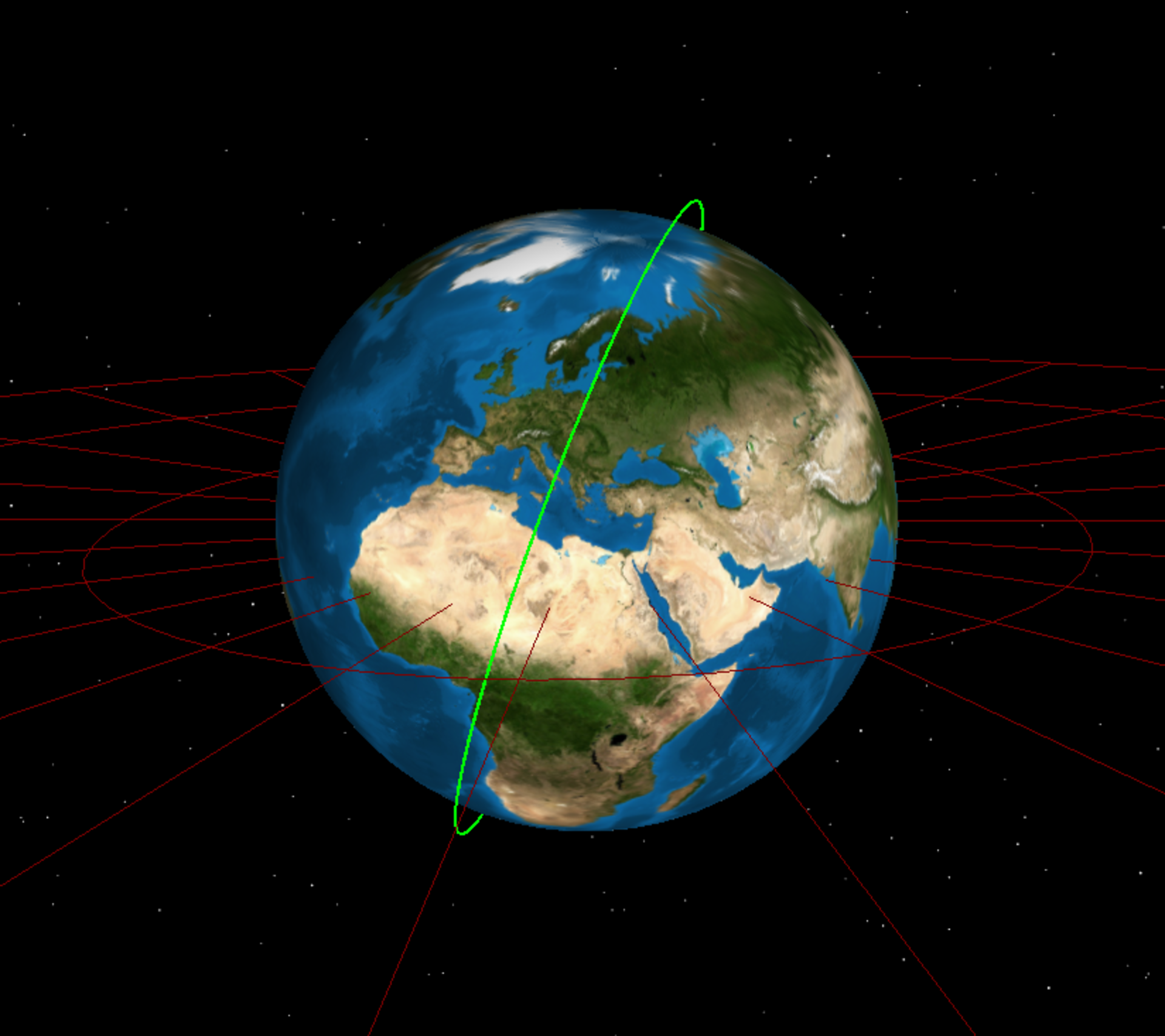 The Fly Your Satellite! (FYS) programme, initiated by the European Space Agency (ESA), presents an exciting challenge for radio amateurs and space enthusiasts worldwide to establish communication via the LEDSAT CubeSat digipeater. This unique opportunity invites participants to connect with the ESA Education Office ESTEC Ground Station in the Netherlands through the satellite digipeater, with a chance to win a special prize – a custom QSL card issued by the ESA Education Office and the LEDSAT team. Running from June 26 to July 30, this challenge offers an exciting chance for radio enthusiasts to engage with space technology and demonstrate their communication skills.
The Fly Your Satellite! (FYS) programme, initiated by the European Space Agency (ESA), presents an exciting challenge for radio amateurs and space enthusiasts worldwide to establish communication via the LEDSAT CubeSat digipeater. This unique opportunity invites participants to connect with the ESA Education Office ESTEC Ground Station in the Netherlands through the satellite digipeater, with a chance to win a special prize – a custom QSL card issued by the ESA Education Office and the LEDSAT team. Running from June 26 to July 30, this challenge offers an exciting chance for radio enthusiasts to engage with space technology and demonstrate their communication skills.
LEDSAT: An Overview
Developed by students at Sapienza University in Rome, LEDSAT is an educational 1U CubeSat that participated in the second edition of the Fly Your Satellite! programme. Its primary objective is to demonstrate a LED-based payload for ground-based optical tracking. The successful launch of LEDSAT on Vega flight VV19 on August 17, 2021, marked a significant milestone for the project. Upon launch, a competition for radio and space enthusiasts from all around the world was launched, encouraging participants to record the first signs of life of the spacecraft.
The Digipeater Challenge in Detail
The LEDSAT digipeater is a special feature capable of storing and retransmitting digital messages sent via UHF, serving as a transponder for long-distance communication. Messages can be retransmitted immediately or with an optional delay of up to two days.
To participate in the competition, radio amateurs are invited to send a message using the UHF band addressed to the ESA Education Office ESTEC Ground Station, with the callsign PI9ESA. The digipeater will be activated during specific time windows (see below), and operators involved in the project will be available at the station, “listening” for incoming messages.

Once a message is received successfully, the sender’s callsign and contact details will be recorded on a customised QSL card, providing recognition for their achievement. LEDSAT follows a Sun-Synchronous orbit, resulting in two communication windows each day – around midday and midnight – where it is possible to establish contact. To predict passes precisely above the ESTEC ground station or your area of residence, refer to this link. Additionally, the latest Two-Line Elements for LEDSAT can be retrieved here.
Considering the monitoring and housekeeping requirements of LEDSAT, as well as the potential high demand from operators, the digipeater activation time slots will follow a pattern of one day ON and one day OFF, with the switch-on/off always occurring at 00:00 UTC. This schedule will commence on Monday, June 26th 00:00 UTC, and conclude on Sunday, July 30th at 24:00 UTC.
While the challenge is supported by our operators on a voluntary basis, efforts will be made to cover as many LEDSAT passes as possible, especially those occurring around local midday on weekdays. A detailed schedule of passes coverage will be published, please make sure to check this article regularly for updates.
Specific Time Slots for LEDSAT Digipeater Activation
| Date | Status | Switch on | Switch off |
| June 26 | ON | 00:00 UTC | 24:00 UTC |
| June 27 | OFF | ||
| June 28 | ON | 00:00 UTC | 24:00 UTC |
| June 29 | OFF | ||
| June 30 | ON | 00:00 UTC | 24:00 UTC |
| July 1 | OFF | ||
| July 2 | ON | 00:00 UTC | 24:00 UTC |
| July 3 | OFF | ||
| … | … | ||
| July 30 | ON | 00:00 UTC | 24:00 UTC |
Please note that this schedule may be subject to change, so stay updated on any revisions by referring back to this article or additional information provided by the FYS programme organisers on the ESA Education social media channels.
The LEDSAT team has prepared a software package for connecting to the digipeater, along with a user manual available for download on the LEDSAT website. Specific parameters are required to communicate with the LEDSAT digipeater (see table).
Parameters for LEDSAT Digipeater Communication
| Parameter | Value |
| LEDSAT TX frequency (uplink) | 435.190 MHz |
| LEDSAT RX frequency (downlink) | 435.310 MHz |
| Modulation | GMSK |
| Protocol | CSP + Golay + ASM (AX100 Mode 5) |
| Baud rate | 1200 |
Important note: If you are not a licensed radio amateur, transmitting to the satellite is prohibited. Nevertheless, you can still participate in the challenge by listening to the messages transmitted by the ESTEC ground station. If you provide evidence of successful reception, including the date and time, you may also receive a customised QSL card.
So, mark your calendars, prepare your messages, and don’t miss your chance to connect and communicate with the LEDSAT spacecraft to receive your QSL card. Let’s unite and make this event a memorable celebration of our shared passion for space exploration and amateur radio communication.
For any questions regarding LEDSAT or the digigpeater challenge, please email cubesats@esa.int.
NASA Team Sets New Space-to-Ground Laser Communication Record
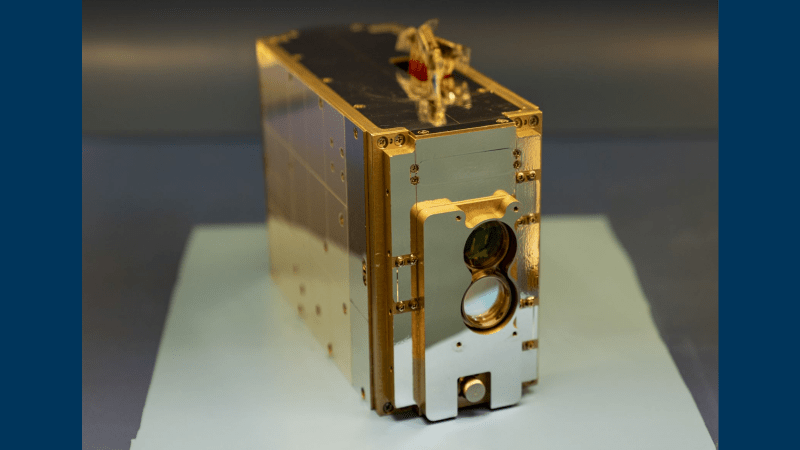
[NASA] and a team of partners has demonstrated a space-to-ground laser communication system operating at a record breaking 200 gigabit per second (Gbps) data rate. The TeraByte InfraRed Delivery (TBIRD) satellite payload was designed and built by [MIT Lincoln Laboratory]. The record of the highest data rate ever achieved by a space-to-Earth optical communication link surpasses the 100 Gbps record set by the same team in June 2022.
TBIRD makes passes over an ground station having a duration of about six-minutes. During that period, multiple terabytes of data can be downlinked. Each terabyte contains the equivalent of about 500 hours of high-definition video. The TBIRD communication system transmits information using modulated laser light waves. Traditionally, radio waves have been the medium of choice for space communications. Radio waves transmit data through space using similar circuits and systems to those employed by terrestrial radio systems such as WiFi, broadcast radio, and cellular telephony. Optical communication systems can generally achieve higher data rates, lower loses, and operate with higher efficiency than radio frequency systems.
TBIRD is a 3U sized satellite payload, meaning it is approximately the size of box of tissues. The TBIRD payload is carried aboard NASA’s Pathfinder Technology Demonstrator 3 (PTD-3) satellite. PTD-3 is a CubeSat measuring about the size of two cereal boxes stacked together. The satellite is synchronized to the Earth’s orbit around the Sun such that it passes over the same ground station at the same times, twice each day.
Achieving the record breaking TBIRD data transmissions truly takes a village. The TBIRD space payload was designed and built by [MIT Lincoln Laboratory]. The payload flies aboard the PTD-3 satellite built and operated by [Terran Orbital]. The PTD-3 satellite was carried into orbit by a [SpaceX] Transporter-5 rideshare mission launched from the [NASA Kennedy Space Center]. The TBIRD mission and concept was developed at the [NASA Goddard Space Flight Center] while the PTD-3 program and mission is managed by the [NASA Ames Research Center]. Finally, the ground station for the data link is part of the Optical Communications Test Laboratory at the [NASA Jet Propulsion Lab].
Of course, future space missions can embed the record breaking optical communication technology demonstrated by TBIRD. Downlinking massive amounts of data from space to Earth is imperative to evolving scientific missions. For example, we expect to enjoy live 4K ultra-high-definition video streaming from the Moon thanks to the Orion Artemis II Optical Communications System (O2O).
Perfecte isolator voor je draadantenne (soort van…)
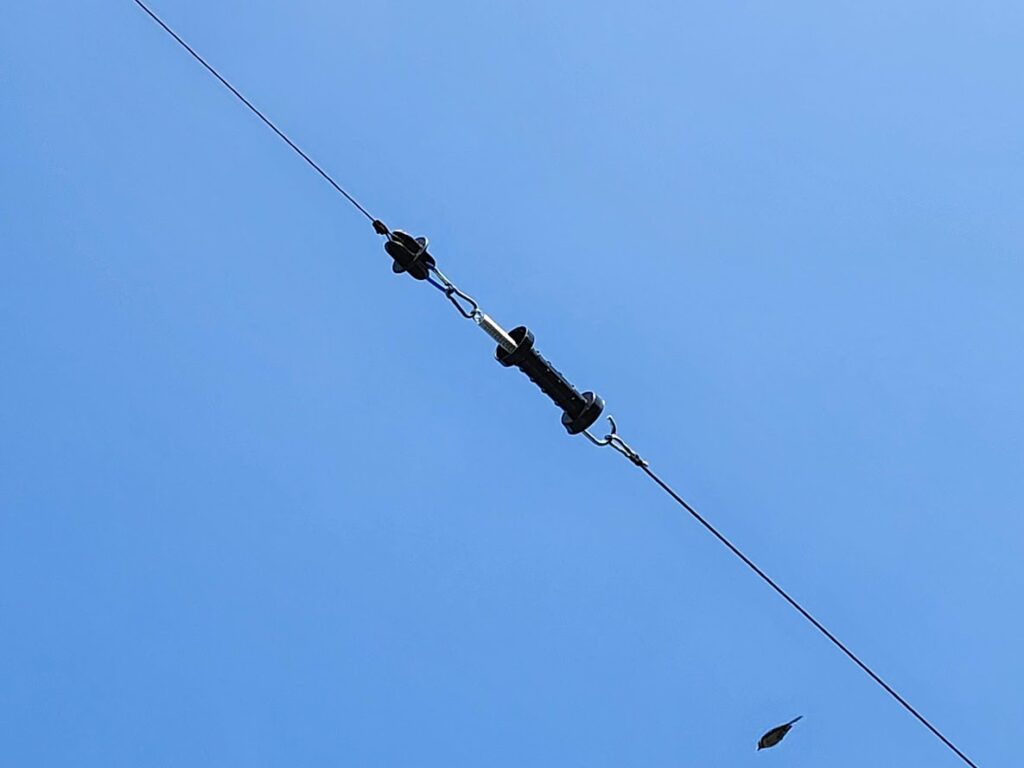 Bij onze vrienden van Van Cranenbroek krijg je allerlei gerei om je weiland met schrikdraad af te zetten. Tussen al dat moois bevindt zich één artikel dat specifiek voor de draadantenne bijzonder geschikt is.
Bij onze vrienden van Van Cranenbroek krijg je allerlei gerei om je weiland met schrikdraad af te zetten. Tussen al dat moois bevindt zich één artikel dat specifiek voor de draadantenne bijzonder geschikt is.
Deze isolator is overigens een slechte isolator want beide kanten zijn met elkaar verbonden middels een veer maar juist dat laatste maakt dit een ideaal tussenstuk voor je draadantenne: door deze achter de isolator te plaatsen, kun je de antenne op spanning ophangen maar heeft de antenne de gelegenheid om in de veer heen en weer te bewegen. De veer is behoorlijk stug maar flexibel genoeg om bij een botsing met een vogel op te rekken en terug te veren.
In de foto zie je nog een vogel langsscheren, die had geluk. Maar je ziet ook dat de haak aan de rechterzijde nog open is, die moet gesloten worden door deze in de bankschroef in te klemmen en dicht te buigen.
Vergeet er dus geen echte isolator tussen te zetten, anders maakt deze veer deel uit van je antenne (tenzij je dat wilt).
Er is nog meer leuks bij Van Cranenbroek, zoals lange veren waarmee je tussen schrikdraad een soort hekwerk kunt maken, die kunnen ook prima dienen om een draadantenne op te spannen en ze hebben nog een leuk haspeltje voor draad, als je tijdens een velddag wat wilt klooien.
Enfin, het is weer knutselweer!
